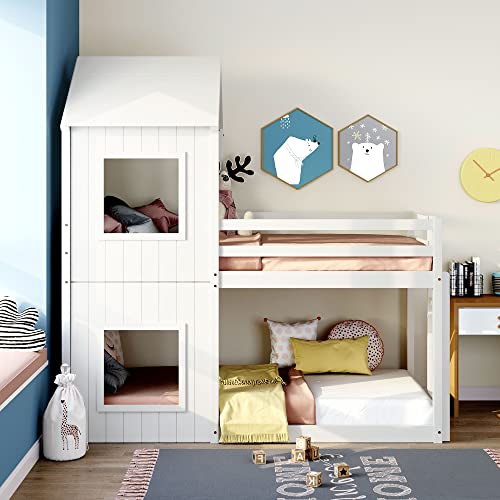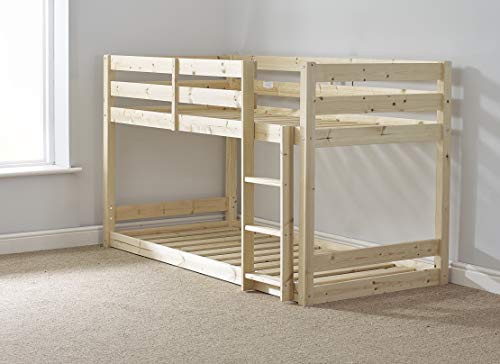
Bunk Beds Store
Add a review FollowOverview
-
Founded Date June 5, 1984
-
Posted Jobs 0
-
Viewed 92
Company Description
14 Cartoons On Bunk Bed For Kids That’ll Brighten Your Day
Choosing a Bunk Bed For Kids

But before you go shopping for bunk beds for your kids, take note of these important safety tips. Make sure the stairs and ladders are securely attached to the frame, and any gaps in guard rails aren’t large enough to cause strangulation.
Safety
Bunk beds are a great space-saving option for children however, they can also be dangerous if not properly set up and monitored. Always choose a bed that has full-length guardrails both on the bottom and top bunks. Also, search for a bed that has been tested by a third-party laboratory for safety and is in compliance with all CPSC rules. If possible, assemble the bunk bed in a room that has no doors or windows that are able to open to prevent children from escaping the bunks at night.
Be aware of the weight capacity of your children and their age when deciding on a bunk bed. Some are designed for younger children only, whereas others can accommodate teenagers and even adults. Decide if you prefer an trundle that is placed on the bottom, or a twin mattress for two beds. In addition, if you’re using the bed for more than two children, make sure the beds are compatible and that you have enough space in the room to accommodate both beds comfortably.
Some children are better at sleeping on the top bunk than others, and it’s important to check their readiness for bunk beds on a regular basis. Experts generally recommend that children less than six years of age shouldn’t sleep on the top bunk, as they may lack the coordination and spatial awareness necessary to safely traverse the ladder and the high-level of the bed.
Also, if your children often have friends sleeping over, make sure they know the rules of the bunk bed regarding the use of the ladder and no rough play or hanging from guardrails. Also, make sure your children are taught to keep belts, jewelry, and jump ropes away from the bunk bed, as they can be the risk of strangulation. Some bunk beds have stairs instead of ladders, which can provide peace of mind for children who are unable to climb. Kids can install night lights on bunk beds to help them safely navigate from and to the top bunk at night.
Space-Saving
Bunk beds make the most of the floor space, allowing more space to study and play. This isn’t just ideal for children’s bedrooms, but can also be used to create a focal point in a dining room or living area.
Consider the size of your room and your child’s age when choosing the best bunk beds for your children. Kids typically transition to the top bunk between six or eight years old, at which point they begin demonstrating the maturity and dexterity needed for this arrangement. However, you know your children best and should perform an individual assessment of their ability to ensure they can handle the transition confidently and comfortably.
Many bunk bed ideas include ladders or stairs that allow easy access to the higher level. Stairs take up more floor space than ladder options, but they can be safer for children as they learn to navigate the high of the beds. Some bunks come with a slide, which gives children a thrilling experience every time they go to bed.
If you choose a bunk with stairs, opt for a style that offers plenty of storage options. This design by Lucy Harris Studio features a drawer underneath the stairs to keep the bunks tidy and tidy.
Include a theme in the design of your bunk beds to make them feel more special. A sports-themed bunk is a great choice for kids who love football or baseball. A fairytale bunk could be ideal for little girls. Bunks with a desk also offer a practical option for children who must finish their homework or work at home.
Bunk beds are a fantastic option for siblings who want to spend time with each other but also appreciate the security and privacy of their own bedrooms. In the case of sleepovers bunk beds are an ideal way for siblings to host their friends without the necessity of using the sofa or floor to sleep on. In addition, only kids who share a room with a sibling will appreciate the option of having sleepovers with friends, too.
Convenience
Bunk beds are a very popular choice for kids as they allow siblings to share a space without taking up floor space. This allows children to grow, play and study with each other while enjoying their independence. It also makes it easier for parents to manage a busy family schedule and keep the home clean. Bunk beds are offered in a variety of designs that make the most of vertical space. They can also be incorporated with any bedroom decor.
Bunk beds are a great way to reduce space and display your parenting style. Bunk and loft designs are available in a vast range of sizes and styles to fit any room such as twin over full-size beds or twin over queen beds. Some models come with built-in storage, while others provide extra storage space with a full or twin trundle. These beds can also be reused in the future, when your kids outgrow them, as they can easily be converted into two separate single beds or a daybed.
Lofts and bunks are not only a great option to reduce space however, they can also bring a sense of excitement and enjoyment to any bedroom. Many children love the opportunity to take over the top bunk and transform it into a clubhouse or fort. They can also invite their friends over for sleepovers and bunkbedsstore create a fun environment where they can have fun and engage in imaginative games.
Spending more time with their siblings during the night can also aid in forming stronger bonds. It doesn’t matter how old they are, having each others to talk to during the difficult times of siblinghood could help strengthen bonds and foster emotional development. Loft beds and bunk beds can be particularly helpful in accommodating older children with younger siblings because it gives the elder one an opportunity to guide the tween or teen and develop a strong relationship with them.
The final decision on the best bunk bed for your kids is determined by your child’s ability to safely climb up and down. The average child will be ready for the top bunk at the age of six, but it’s crucial to assess your child’s mental and physical development. Physical development includes coordination, dexterity and the ability to climb ladders. Mental development is contingent on maturity and level.
Style
Bunk beds can bring a fun, playful touch to any room. They are ideal for families or siblings who share a bed together. They let children express their individuality by the theme, color and design they select for their rooms. When choosing a bunk bed, there are many options to consider.
A standard bunk bed is the most basic type of bed. It consists of two twin beds that are stacked on top of one another. This configuration is ideal for siblings who share one room, as it allows them to communicate comfortably even though they are on different floors. Many of the basic models of bunk beds offer customization options that make it easy to find a bed that will fit the bedroom of any child.
Some bunk beds have unique features to make them more attractive and practical. Some bunk beds come with drawers underneath the bed to keep the space underneath the bunks organized and clean. This makes it easy to store bedding, clothing and other items. It’s also possible to attach curtains or drapes to the bunk beds to provide some privacy for sleepers.
Other kinds of bunk beds for kids include loft beds that elevate the mattress just a few feet off the floor. This arrangement is space-saving and provides a great spot to study, read or simply relax. You can also add more storage space by adding shelves or a desk.
The final option is a unique, themed bunk bed that aligns perfectly with the overall theme of the room. Bunk beds can be made with the form of castles, trees, or pirate ships. This will add a fun element to any child’s bedroom. These themed bunk beds encourage imagination and encourage creativity.

